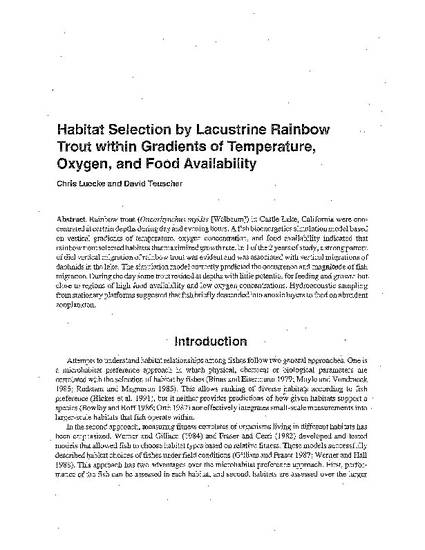
- distribution,
- rainbow trout,
- temperature,
- oxygen,
- food
Rainbow trout (Oncorhynchus mykiss [Walbaum]) in Castle Lake, California were concentrated at certain depths during day and evening hours. A fish bioenergetics simulation model based on vertical gradients of temperature, oxygen concentration, and food availability indicated that rainbow trout selected habitats that maximized growth rate. In 1 of the 2 years of study, a strong pattern of diel vertical migration of rainbow trout was evident and was associated with vertical migrations of daphnids in the lake. The simulation model correctly predicted the occurrence and magnitude of fish migration. During the day some trout resided at depths with little potential for feeding and growth but close to-regions of high food availability and low oxygen concentrations. Hydroacoustic sampling from stationary platforms suggested that fish briefly descended into anoxic layers to feed on abundant zooplankton.
